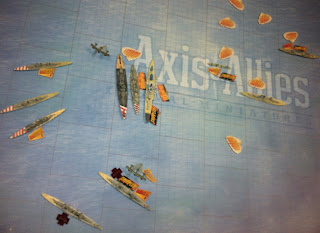There's a lot of speculation in the article and on the Internet about whether Israel could pull it off, and the headline of the article even suggests it might be difficult to do.
"Iran Raid Seen as a Huge Task for Israeli Jets"
It says.
Right.
As it turns out, of course, this question has been exhaustively examined in the Clash of Arms wargame Persian Incursion. I had hoped to write up a detailed review and session report based on an online game I had been playing, but real-life interruptions broke up the pace and its unclear whether it will get finished soon or ever. But I did play enough of it to get a good appreciation of the game's ability to address the question: Can Israel do it?
Let me address right off the protest: "But it's only a game!" True, but many experts familiar with both classified military wargames and civilian wargames have said that the military games have little or no advantages in accuracy over thoroughly researched open-source commercial games.
First off, it's important to note that Persian Incursion is really two games in one. The first is a political-diplomatic card game that can be played concurrently or prior to the military game and examines the complex interplay of politics, diplomacy, media, public opinion and other "soft" factors tat are critically important but hard to quantify. This portion of the game is highly subjective and not coincidentally provides the Iranian player with his best chance for successes. This is defensible from areal-world standpoint and, just as importantly, allows the game designer to create a competitive game experience for the Iranian side.
And the hard-data driven military game, which is basically a streamlined version of Larry Bond's super-detailed Harpoon4 game system, shows how necessary this card game option is because the Iranians, plainly have absolutely no chance militarily. Oh, sure, a lucky shot here or there may shoot down an Israeli jet or two or land an occasional missile in a Tel Aviv city block, with the consequent propaganda 'victory' for Iran, but the Iranians have no ability to impede the Israeli raiders in any significant military sense. Whatever the Israelis decide to destroy will be destroyed. The Israeli challenge is almost purely a technical and logistic one caused by the extreme distance and some limited resources. As such, however, it's also one that thorough planning by a highly professional military such as Israel's can be expected to overcome.
What the Israelis won't have to deal with is much of the way of unpredictably effective defensive action by the Iranian military. Their available aircraft and anti-aircraft missiles are several generations behind the Israeli attackers and, for the most part, will likely be completely neutralized. As I said, one can't completely discount a lucky shot, so there's some small risk for an unpleasant (for the Israeli side) incident or two, but losses will be minimal and damage extensive.
For the purposes of making the game competitive and challenging for the players, the game demands that the Israelis completely destroy their targets in order to get full credit towards winning the war. But in reality, all the Israelis have to do is destroy certain critical components of the targeted facilities -- whether nuclear or oil -- to accomplish their aim of delaying Iran's supposed nuclear ambitions. It's clear that they should have little trouble doing that.
In the final analysis, Bond's game suggests strongly that the military success of an Israeli strike is about as sure thing as you're likely to see in the annals of warfare. What the game does not -- and cannot -- answer is whether such a strike would be a political and diplomatic success or a disaster. The card game, however, does imply that's where the biggest danger for the Israelis and, by extension, the US lies.

